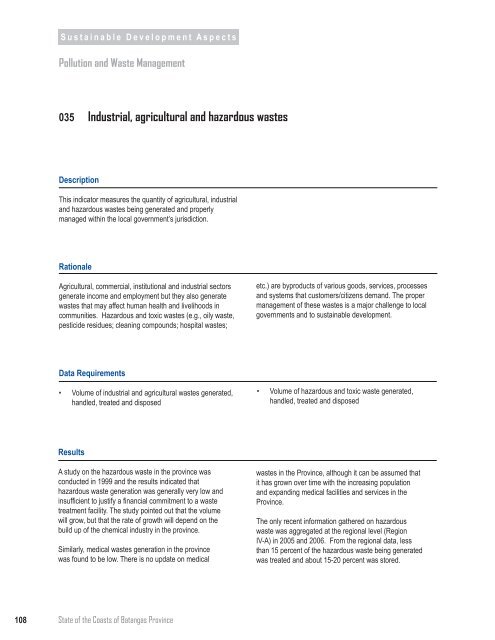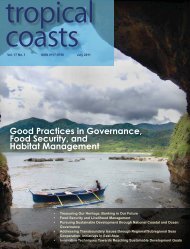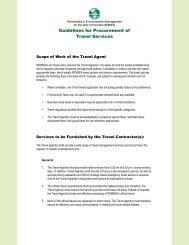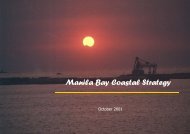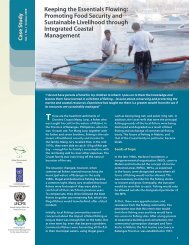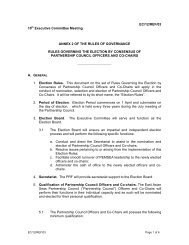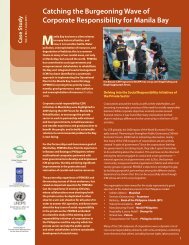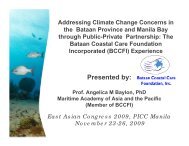Download PDF Copy - Pemsea
Download PDF Copy - Pemsea
Download PDF Copy - Pemsea
Create successful ePaper yourself
Turn your PDF publications into a flip-book with our unique Google optimized e-Paper software.
S u s t a i n a b l e D e v e l o p m e n t A s p e c t s<br />
Pollution and Waste Management<br />
035 Industrial, agricultural and hazardous wastes<br />
Description<br />
This indicator measures the quantity of agricultural, industrial<br />
and hazardous wastes being generated and properly<br />
managed within the local government’s jurisdiction.<br />
Rationale<br />
Agricultural, commercial, institutional and industrial sectors<br />
generate income and employment but they also generate<br />
wastes that may affect human health and livelihoods in<br />
communities. Hazardous and toxic wastes (e.g., oily waste,<br />
pesticide residues; cleaning compounds; hospital wastes;<br />
etc.) are byproducts of various goods, services, processes<br />
and systems that customers/citizens demand. The proper<br />
management of these wastes is a major challenge to local<br />
governments and to sustainable development.<br />
Data Requirements<br />
• Volume of industrial and agricultural wastes generated,<br />
handled, treated and disposed<br />
• Volume of hazardous and toxic waste generated,<br />
handled, treated and disposed<br />
Results<br />
A study on the hazardous waste in the province was<br />
conducted in 1999 and the results indicated that<br />
hazardous waste generation was generally very low and<br />
insufficient to justify a financial commitment to a waste<br />
treatment facility. The study pointed out that the volume<br />
will grow, but that the rate of growth will depend on the<br />
build up of the chemical industry in the province.<br />
Similarly, medical wastes generation in the province<br />
was found to be low. There is no update on medical<br />
wastes in the Province, although it can be assumed that<br />
it has grown over time with the increasing population<br />
and expanding medical facilities and services in the<br />
Province.<br />
The only recent information gathered on hazardous<br />
waste was aggregated at the regional level (Region<br />
IV-A) in 2005 and 2006. From the regional data, less<br />
than 15 percent of the hazardous waste being generated<br />
was treated and about 15-20 percent was stored.<br />
108 State of the Coasts of Batangas Province


